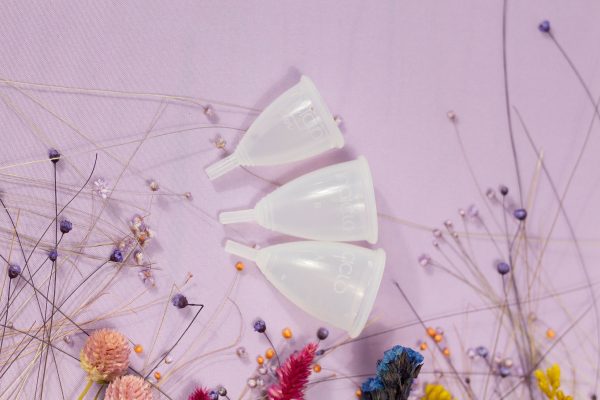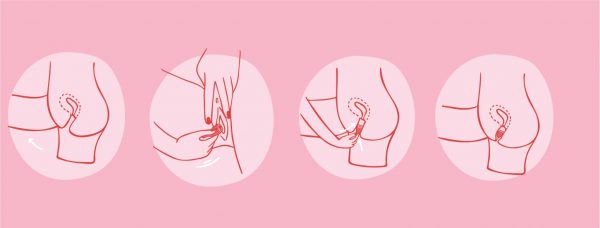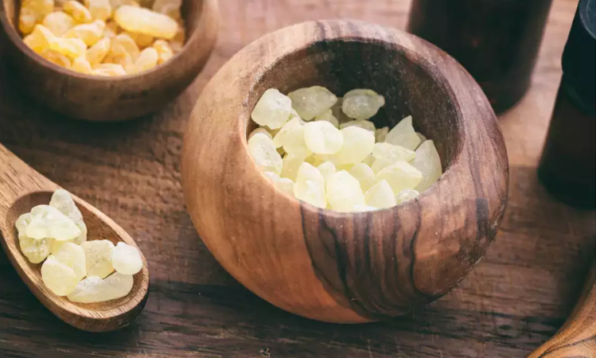As a part of sustainable living, many menstruating people are looking for more eco-friendly alternatives to pads and tampons. Over the last few years, menstrual cups have emerged as a feasible option. But are they safe to use? And more importantly, how do you use a menstrual cup? Here’s everything you need to know about menstrual cups – pros, cons, and how to use them.
What exactly are menstrual cups?

Menstrual cups are small, bell-shaped cups used during periods. They are usually made of silicone or latex rubber. Unlike a pad or a tampon that absorbs blood and is meant for one-time use, a menstrual cup collects blood and can be emptied, cleaned, and reused.
Why should you use a menstrual cup?
Periods are often a pain in the ass for most menstruating people. Dealing with cramps and PMS can be extremely hard on the body and mind. Add to that the need to change pads and tampons every 4-5 hours, and the whole experience gets way too exhausting. Menstrual cups make it a little easier. Here are some advantages of using a menstrual cup.

1. Eco-friendly
Unlike tampons and pads that are discarded regularly, menstrual cups can be reused for a long time. Sanitary waste fills up pretty quickly and pads and tampons are harder to recycle. Since the longevity of a cup is higher, the associated waste is lower.
2. Can be used for a long time
While there are disposable cups available, most menstrual cups can be used for 6 months to 10 years. As long as you sanitise them properly and are careful with the usage, they can last a long time.
3. Easy on the pocket
As menstrual cups are reusable, you don’t need to buy one every month. You just need one or a maximum of two cups to get you through years of periods. Menstrual cups are a one-time cost. You won’t end up spending thousands of rupees every year on tampons and pads.
4. No odour
Tampons and pads release an unpleasant smell when they get exposed to air, usually while using the washroom. That is not an issue with menstrual cups. As the cup is not exposed to air, there is no worry of any odour.
5. Longer usage time
Tampons need to be changed every 4-6 hours, while sanitary pads need to be changed every 3-4 hours. Meanwhile, menstrual cups can be used for a maximum of 12 hours. They only need to be changed twice in a 24-hour period. This, of course, depends on how much you bleed.
6. Maintains the pH balance
Pads cause a higher risk of infections because they keep the vagina moist and warm. This leads to the growth of bacteria around the vagina. Tampons, as they are absorbent, can absorb all the good bacteria in the vagina along with the menstrual blood. This further leads to a pH imbalance. With a menstrual cup, you don’t face any of these problems. A menstrual cup only collects blood and vaginal fluid as opposed to absorbing them. So, there is no discomfort, rashes, or over-absorption.
Challenges of using a menstrual cup

While there are a lot of pros to using a menstrual cup, there are certain challenges as well.
1. Inserting can be time-consuming
People who are not used to using a tampon can find it difficult to use a menstrual cup. It takes a few tries to get the hang of it, but with time, it gets easier.
2. Finding the right fit
Cups come in many sizes and they need to be chosen depending on your age, flow, and if you’ve given vaginal birth. In case you have a tilted uterus or a low cervix, using a cup can get challenging. So, finding the right fit will take some trial and error.
3. It can be messy and tedious
You need to use your fingers to insert and remove a cup. Unlike a tampon, it doesn’t have an applicator. Removing the cup can also be quite messy. As the cup is usually filled with menstrual blood, it can cause some spillage while removing. Also, cleaning the cup in a public washroom can get a little tedious. Once you remove the cup, you need to wash it out properly before you insert it again.
4. Cleaning the cup
You need to thoroughly sanitise your cup in between cycles. You need to clean it in boiling water and make sure the silicone doesn’t burn. While there’s no need to clean the cup in boiling water during your period, it is a must after your cycle.
How to insert and remove a menstrual cup
Inserting a menstrual cup

- Wash your hands
- Relax and sit in a squatting position
- Lubricate the rim of the cup with either water or a water-based lubricant
- Fold the cup in half, with the rim facing upwards
- Now, insert the cup into the vagina at a 45-degree angle. You can use your other hand to hold your outer labia apart.
- Once the cup is inside, let it unfold. Once fully inserted, only the stem of the cup should be sticking out. And it should not be more than half an inch.
- Give the stem a little tug to ensure the cup is inserted well and has created a suction.
Steps to remove a menstrual cup
- Wash your hands thoroughly
- Sit comfortably in a squatting position
- Locate the stem of the cup and insert your fingers into the vagina. You will find the bottom of the cup. Using your fingers, pinch the bottom of the cup to release the suction. Do not pull on the stem.
- Gently wiggle the cup and pull it out. Keep the cup upright while pulling it out. In case you struggle, use your pelvic muscles to push the cup down.
- Once the cup is out, empty it and rinse it in cold water. If it’s handy, wash the cup out with a mild soap.
- Repeat the insertion process to reinsert the cup
Using a menstrual cup can be life-changing. You can go about your daily activities without the worry of staining or changing a pad or tampon every few hours. You might be hesitant to go for a swim during your period, but a cup eliminates that problem. Whether you choose to switch to cups or not is entirely up to you. But now, you have all the details that can help you make the right decision for yourself.
Images Source
Related: Tampons, Menstrual Cups Or Organic Napkins? Know This Before You Ditch Your Regular Pad














